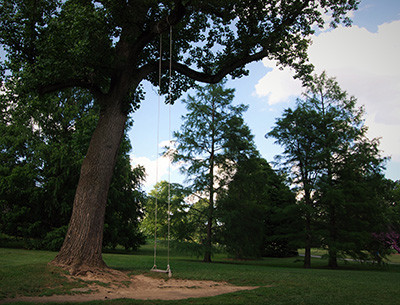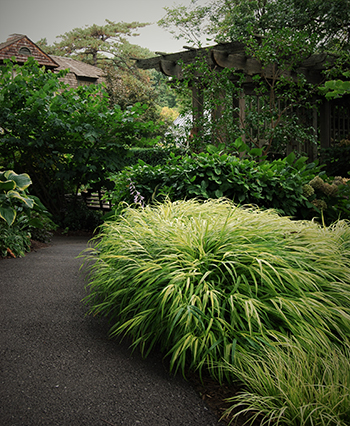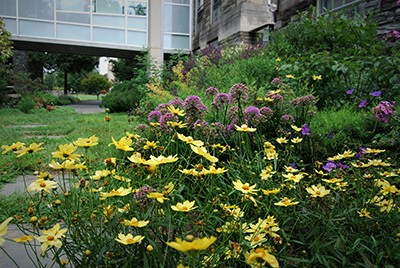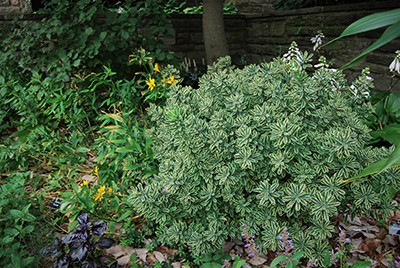
Plants of the Week: September 4
Hakonechloa macra ‘Aureola’
I keep finding myself writing about shade-loving perennials. I’ve decided the day has come when I have to step outside my obsession and write about all the other wonderful plants there are to be had in the garden; today is not that day though.
Hakonechloa macra ‘Aureola’ catches my eye when it’s planted in any landscape. Its deer resistant, yellow-green, bamboo-like leaves brighten up shaded or darkly-colored gardens. Commonly known as Japanese forest grass, H. macra can grow 18 inches tall, forming dense slow-spreading clumps equally as wide. It can even tolerate growing underneath Juglans nigra, black walnut.
Japanese forest grass will get leaf scorch if planted in too much sun or if consistent moisture is not maintained. The leaf color may also be compromised if planted in too much shade, where its gold variegation becomes lime green. You can watch H. macra on the outside of the Terry Shane Teaching Garden become pink-tinged as summer comes to an end and the cool weather rolls in. Photo Credit: R. Armstrong
Coreopsis ‘Full Moon’
The Pollinator Garden is full of red and purple flowers so I was pleased to see the contrast of yellow that Coreopsis ‘Full Moon’ brought into the mix. Growing to be 18-24 inches tall in full sun, Coreopsis makes little seed. Instead it puts most of its energy into making flowers which will decorate your garden all summer, bringing in pollinators and hummingbirds.
Coreopsis benefits from being divided every 2-3 years in the spring or it can be propagated from the little bit of seed it does make. Dead heading this deer-resistant native extends bloom time, so picking a few flowers for a bouquet is encouraged. In a trial that was conducted at Mt. Cuba in Wilmington, Delaware, ‘Full Moon’ proved to be one of the few cultivars to be reliably hardy throughout all seasons. Photo Credit: R. Armstrong
Daphne x burkwoodii ‘Carol Mackie’
Although I can tell this shrub is about to bloom, taking a second to appreciate its beautiful foliage before it’s covered in pink blossoms is a must. Daphne x burkwoodii ‘Carol Mackie’ has variegated, semi-evergreen leaves starting out with yellow margins that mature to creamy white.
‘Carol Mackie’ is very easy to grow in marginally fertile soil, reaching 3 feet tall and 4 feet wide. Since this shrub does not get very large and enjoys being planted in partial sun, it is a fantastic option for urban landscapes or where there is not a lot of space.
Perfect for planting outside a doorway or window, D. x burkwoodii is quite fragrant in the spring and fall when blooming. Planting a D. x burkwoodii near other broadleaf shrubs allows a much needed acid fertilizer to be easily applied after it blooms. Keeping the roots cool and moist throughout the summer is important, as well as planting it in an area well protected from harsh winter winds and offers good drainage. Photo Credit: R. Armstrong
If you would like to add any of these delightful plants to your garden, be sure to check out the Scott Arboretum Selections: Fall Sale on September 15 to 17. All three of these plants and more will be available for fall planting.








No Comments